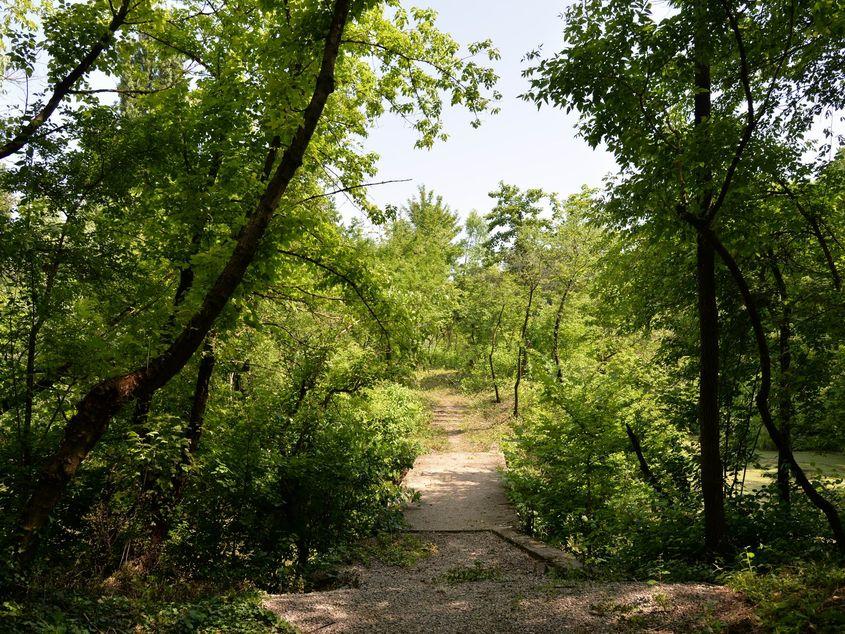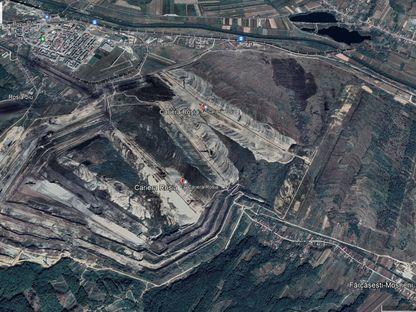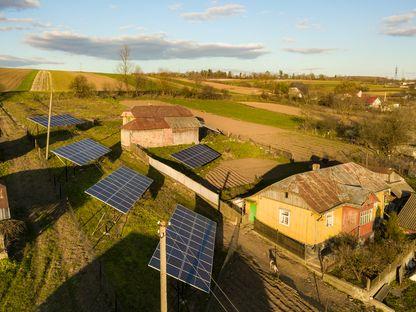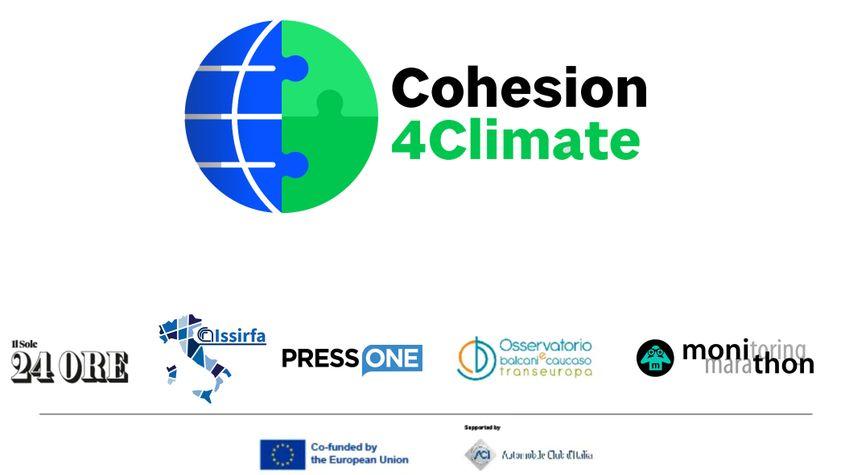
Photo: Lucian Muntean
21/07/2025
Europe's patience is wearing thin. After 18 years in the EU, Romania is facing its maturity test
The European Union’s new draft budget for the next seven years stands as a true test of maturity for Romania, which, coincidentally or not, will mark 18 years since joining the EU in 2025. The budget proposed by the European Commission totals nearly 2 trillion euros, to be spent over the 2028–2034 period.
The „bad news” for Romania is that the EU’s new budgetary philosophy no longer places the same emphasis on agricultural funds and cohesion programs—those designed to help bring the EU’s poorer regions up to the standards of more developed ones. Yet these very funds, for agriculture and cohesion, have so far proven vital to Romania’s development and efforts to raise living standards.
In its presentation of the new multiannual budget, the European Commission proposed merging cohesion and agricultural funds into a single national plan for each member state. This approach risks pitting cohesion and agricultural funding against other financing streams—potentially undermining the unified European vision that has guided them so far.
Ursula von der Leyen’s new vision is clear: more money for defense, less for agriculture. More funding for „competitiveness” and „innovation,” and less for „disadvantaged regions.”
Titled „A Budget for a Stronger Europe”, the proposal calls on EU member states to show greater „strength.” For Romania, this marks a crucial test of maturity, one that brings us face to face with a familiar trap: in the 18 years of managing EU financial frameworks, Romanian authorities have consistently struggled to handle these funds effectively from the central level.
„We’re concerned about our country’s ability to carry out systemic reforms.”
Right now, the recentralization of EU agricultural and cohesion funds feels like an „everything-in-one”, and it doesn’t seem to appeal at all to the future beneficiaries of cohesion funding, according to Ana-Maria Icătoiu, Vice President of the Federation for Innovation and Sustainable Competitiveness in SMEs.
PressOne: The new EU budget draft for 2028–2034 shows a shift in how cohesion funds are allocated. What direct impact does such a decision have on Romania?
Ana-Maria Icătoiu: It was to be expected that the European Commission would move, at least in this first draft, toward an approach more closely aligned with the national recovery and resilience plans (NRRPs). In other words: if you want money for investments, you have to deliver reforms in return.
As a simple citizen of both Romania and the EU, I think this is an excellent approach. I too want to see reforms in exchange for investments.
Mulți ne citesc, puțini ne susțin. Fără ajutorul tău, nu putem continua să scriem astfel de articole. Cu doar 5 euro pe lună ne poți ajuta mai mult decât crezi și poți face diferența chiar acum!
But then we run into our own realities here in Romania—and we can clearly see what a failure our NRRP has turned out to be. It followed exactly this same model: you commit to certain reforms, meet a set of milestones, and in return, you receive funding.
From the perspective of SMEs, we certainly welcome the European Commission’s focus on systemic reforms—entrepreneurs know very well how badly Romania needs them. What worries us, however, is our country’s actual capacity to carry out genuine, deep reforms in exchange for European funding.
Do we want the 2028–2034 Multiannual Financial Framework to be larger? Does Romania want a bigger allocation? If so, what’s our approach? Where should the additional funding come from? How do we contribute more to the EU budget? At this virtual negotiating table, Romania has yet to offer—at least officially—clear answers to these questions.
There’s also a looming risk: that EU funds could turn into a program where a „supreme pen” arbitrarily decides where the money goes.
PressOne: What elements of the new EU budget proposal should Romania focus on in negotiations with the European Commission?
Coal Mining Expansion Leads to Deforestation: Over 470 Hectares of Forest Cut Down in Gorj, Romania
Over the past six years, more than 470 hectares of national forest land have been allocated by the government, without compensation, to the Oltenia Energy Complex (CEO) for the expansion or opening of new coal mines.
The not-so-green Romania. The state delays settlements for photovoltaic panels by 2 years
PressOne reviews the main dysfunctions in the production, consumption and distribution of energy from renewable sources, as revealed by discussions with consumers and data provided by official sources at the request of our editorial office.
Ana-Maria Icătoiu: For example, this merging of the cohesion policy and the Common Agricultural Policy: for Romania, it is essential that cohesion remains a standalone pillar in the next EU budget.
European funds over the past 18 years have helped Romania tremendously. GDP per capita has grown significantly compared to its level in 2006, before EU accession.
However, within the regions, the gap between counties that were already economically stronger and those that were less developed has widened rather than narrowed. Take, for example, the South Muntenia Region: we see two economically powerful counties—Prahova and Argeș—but others, like Teleorman, Dâmbovița, and Călărași, have been left behind.
Un newsletter pentru cititori curioși și inteligenți.
Sunt curios
It is crucial to keep Cohesion as a foundational pillar in the next EU budget at the national level. We must also be careful not to spark a competition for EU funds between farmers and agricultural businesses, on one side, and SMEs operating outside agriculture and public authorities seeking funding for health, education, or social services, on the other.
Placing these two pillars—agricultural policy and cohesion—into the same envelope, as things currently stand, is unlikely to produce positive outcomes.
Another major concern relates to the proposed national and regional partnership plans. While the European Commission appears to favor a more decentralized approach—leaving decisions to member states that are presumably best placed to understand the needs of their own communities—our worry stems from past experience.
We've seen what can happen in Romania when vague frameworks are left open to interpretation. If the final EU regulations don’t clearly spell out how these national and regional partnership plans should function, there’s a real risk that European funds will devolve into something resembling a „European PNDL” (National Local Development Programme), centralized in the hands of someone in Bucharest, and detached from the actual needs of the regions.
PressOne: Why is it a bad idea to have a „supreme pen” at the government level deciding how these funds are allocated?
Ana-Maria Icătoiu: The best thing that has happened to Romania since joining the EU is the decentralization of the Regional Programme, which is taking place under the current 2021–2027 financial framework.
From the private sector’s perspective, it’s been all positive. Under the 2014–2020 programme, there were project calls where 18 months passed between a company submitting a funding request and signing the contract.
Now, under the current 2021–2027 programmes, I’ll give a concrete example from the Muntenia Regional Development Agency: from the moment of submitting and uploading the application to receiving the notification of approval, it took, on average, just three and a half months.
That’s what decentralization has achieved: bringing the funds closer to the communities.
Those at the central level often seem more focused on showing beneficiaries how not to implement projects—acting more like gatekeepers eager to catch mistakes than partners in development.
What we are advocating for is that the future EU budget regulation should clearly spell out how these national and regional partnership plans will function. It should define the rights and responsibilities of all actors involved. From our perspective, decision-making must remain at the regional level—closer to the final beneficiaries—not centralized in Bucharest.
Why environmental policies remain crucial for Romania
PressOne: So why did the European Commission decide to „centralize” these funds in the first place? And could Romania negotiate an exception—some form of decentralization tailored to our specific context?
Ana-Maria Icătoiu: The European Commission is trying to blend the current cohesion policy with the NRRP model. At the EU level, it’s a sound approach, based on the belief that member states have reached a sufficient level of maturity to manage their European funds independently.
It’s a reasonable approach—but we run into the realities of how things work in Romania.
That’s why EU institutions must include in the regulation mechanisms that allow the Commission to monitor how these principles are actually applied. If you want investment money, you have to deliver reforms. The private sector has been calling for reforms for years—we want them too. We want less bureaucracy and easier access to EU funds.
Let me give you this example: under the 2021–2027 financial framework, Romania hasn’t even reached 10% absorption, even though the budget has been available since 2021.
PressOne: How are environmental policies reflected in the EU’s new draft budget, and how important do they remain for Romania?
Ana-Maria Icătoiu: From the perspective of Romanian SMEs—especially those in manufacturing, with higher energy consumption—decarbonization, improving energy independence, and increasing energy efficiency are no longer luxuries. They’re matters of survival, not just about boosting competitiveness.
There’s no point flooding the market with non-reimbursable EU funds—whether through the NRRP or modernization funds—to help SMEs install solar panels for self-consumption if, inside the production halls, they’re still using equipment that’s 15–20 years old and consumes twice as much electricity as it should.
Romania is the only EU member state that, in the last 30 years, has never had a national program for the private sector aimed at retooling or replacing outdated manufacturing lines with energy-efficient ones.
A major source of Romanian SMEs’ competitiveness problems—especially for exporters competing with businesses in Central and Eastern Europe—is exactly this: the lack of energy efficiency.
What changes after 2028. Bonus: Moldova is already entering the race for EU funds
PressOne: Concretely, what will change for Romania after 2028? Will EU funding priorities shift, especially as Moldova begins accession negotiations?
Ana-Maria Icătoiu: There will no longer be traditional grants available for just anything. By 2028, Romania will have gone through three financial frameworks in which the private sector benefited from non-reimbursable grants. It’s only natural that newer member states coming in—like the Republic of Moldova—will be the ones to receive those classic grants.
Romanian entrepreneurs have already come to terms with the fact that after 2028, the era of standard non-reimbursable grants will end. Instead, financial instruments will take their place—loans, for instance, backed by guarantees from either the member state or the European Commission.
Starting this year, pre-accession funds have already begun to flow toward the Republic of Moldova.
From Romania’s perspective, Moldova’s EU accession—and hopefully Ukraine’s as well—is a major opportunity for economic development. There are Romanian companies that will undoubtedly invest in Moldova once it becomes a full EU member state.
When it comes to Ukraine, however, we’re seeing a clear disconnect on the part of the Romanian state regarding the country’s future reconstruction. There’s no national strategy outlining how Romania plans to be involved in rebuilding Ukraine’s economy.
We’re completely absent from these discussions. If we look at Ukraine’s size, its population, and the level of industrial development it had before the war, it’s a real missed opportunity not to position ourselves now.
If Romania starts thinking strategically, it should aim to become the key regional power. Once the war in Ukraine ends, we must position ourselves as the main power center in Eastern Europe—just as Poland has become in Central Europe.

Avem nevoie de ajutorul tău!
Mulți ne citesc, puțini ne susțin. Asta e realitatea. Dar jurnalismul independent și de serviciu public nu se face cu aer, nici cu încurajări, și mai ales nici cu bani de la partide, politicieni sau industriile care creează dependență. Se face, în primul rând, cu bani de la cititori, adică de cei care sunt informați corect, cu mari eforturi, de puținii jurnaliști corecți care au mai rămas în România.
De aceea, este vital pentru noi să fim susținuți de cititorii noștri.
Dacă ne susții cu o sumă mică pe lună sau prin redirecționarea a 3.5% din impozitul tău pe venit, noi vom putea să-ți oferim în continuare jurnalism independent, onest, care merge în profunzime, să ne continuăm lupta contra corupției, plagiatelor, dezinformării, poluării, să facem reportaje imersive despre România reală și să scriem despre oamenii care o transformă în bine. Să dăm zgomotul la o parte și să-ți arătăm ce merită cu adevărat știut din ce se întâmplă în jur.
Ne poți ajuta chiar acum. Orice sumă contează, dar faptul că devii și rămâi abonat PressOne face toată diferența. Poți folosi direct caseta de mai jos sau accesa pagina Susține pentru alte modalități în care ne poți sprijini.
Vrei să ne ajuți? Orice sumă contează.
Share this




